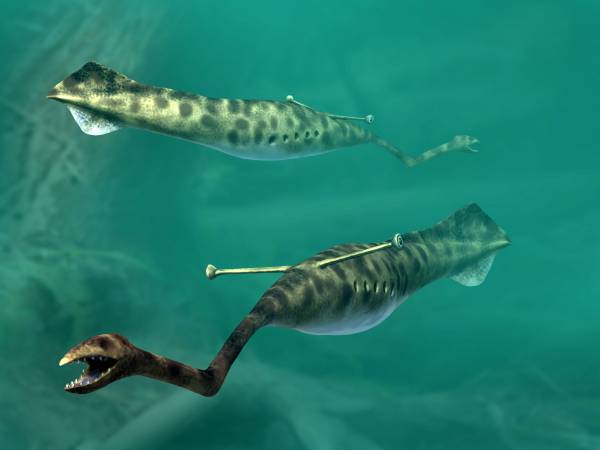The Tully Monster
What Was The Tully Monster?
 |
| An artist's render of what a Tully Monster could've looked like |
The "Tullimonstrum gregarium", better known as the Tully Monster, was an ancient Pennsylvanian era creature that had a long proboscis and handlebar-esque eye stalks. This mouth had two pincers at the end and the actual mouth part where the food would travel down. The Tully Monster is thought to be related to the common day Lamprey. Both the Tully Monster and the Lamprey have similar "gills", which are little holes in the side of their bodies.
 |
| Lampreys with their "hole gills". |
Long ago, during the Pennsylvanian period about 300 million years ago, Illinois used to be a muddy swamp, filled with biodiversity. There were animals that are related to modern-day lizards, frogs, shrimps, squids, jellyfish, and other marine animals, along with trees that towered 100 feet above. During this era, the Earth's atmosphere was abundant with oxygen. This caused insects such as scorpions and dragonflies to be much larger than today. It is said that the dragonflies could have gotten to be as big as hawks! Illinois is filled with limestone and sandstone, and when an animal died in the muck they would be preserved and fossilized.
The First Known Tully Monster
The history and anatomy of the Tully Monster has been long debated and changed ever since a man by the name of Francis Tully found a Tullimonstrum fossil in an Illinois coal mine's scrap pile in 1955. Tully had come across a unique fossil that was unlike anything anybody had ever seen. The fossilized Tullimonstrum had a long proboscis tipped with two pincer-like jaws, eyes attached to the ends of a bar, and a shovel-shaped tail. Tully brought the fossil to a Chicago Field Museum to see if they could find out what the fossil was. The paleontologists at the Field Museum could not find out what it was, as nobody could recognize the creature, or even know where to place it in fossil records. After Francis Tully died in 1987, a Field Museum researcher by the name of Mary Carman brought scientists from the Illinois State Geological Survey asked some legislators to make the Tullimonstrum into Illinois' state fossil. Most saw the bill as a waste of time, but in 1989 the Tullimonstrum reached state fossil status and has remained that way since.
 |
| A Tullimonstrum fossil with labels compared to an artist's render of what it may have looked like whilst still alive. |
Vertebrate, or Invertebrate?
Whether the Tully Monster was an invertebrate or vertebrate has been debated since it's discovery. After 60 years, scientists may have an answer. In 2016, scientists solved the Tullimonstrum mystery, concluding that it was, in fact, a vertebrate. The Tully Monster had a cylindrical "Bullet" shaped body, a trunk-like mouth with pincers at the end with two rows of teeth, and eyes fixed on a rigid bar. This rigid eye stalk bar is thought to have been a protective guard for the Tully Monster's eye optic nerves. After a re-evaluation of the Tullimonstrum fossils, scientists and paleontologists determined that the Tullimonstrum was a vertebrate, sporting a stiffened rod also known as a notochord. A notochord is a rudimentary spinal cord which supported the Tullimonstrum's body but was previously misidentified as the creature's stomach.


Comments
Post a Comment